Classroom Need
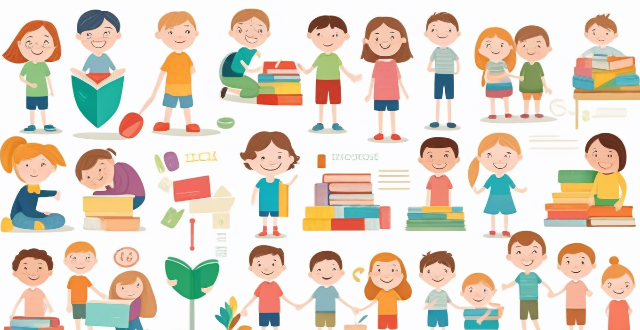
How do you create an inclusive classroom environment for students with diverse special education needs ?
Creating an inclusive classroom for students with diverse special education needs is essential. Strategies include differentiated instruction, Universal Design for Learning (UDL), collaborative learning, positive classroom culture, and professional development. These approaches ensure equal opportunities for all students to learn and thrive.
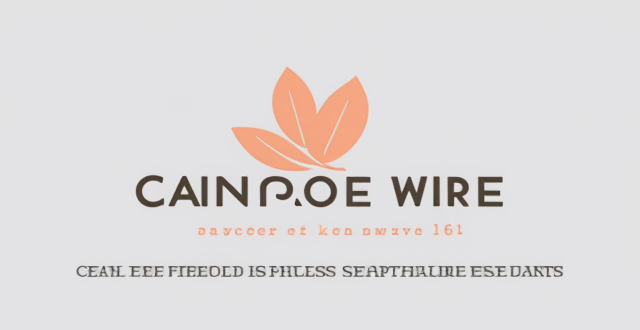
How can artificial intelligence be integrated into classroom teaching ?
Artificial intelligence (AI) can revolutionize classroom teaching by enhancing student engagement, personalizing learning experiences, and improving educational outcomes. Adaptive learning systems create personalized learning pathways and provide real-time feedback, while intelligent tutoring systems offer individualized coaching and progress tracking. Automated grading and assessment streamline the evaluation process, virtual learning assistants provide round-the-clock support, and data analytics tools inform instructional decisions. AI-powered group projects and peer feedback mechanisms facilitate collaborative learning environments. Integrating AI into classroom teaching has the potential to transform education by creating more engaging, personalized, and efficient learning experiences for all students.
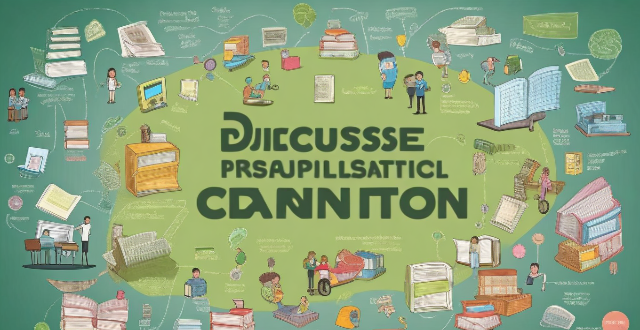
Can remote education platforms replace traditional classroom learning ?
The text discusses the pros and cons of remote education platforms and concludes that they cannot fully replace traditional classroom learning due to lack of social interaction, difficulty with self-motivation, and limited hands-on experience. However, a combination of both methods may provide a well-rounded education.
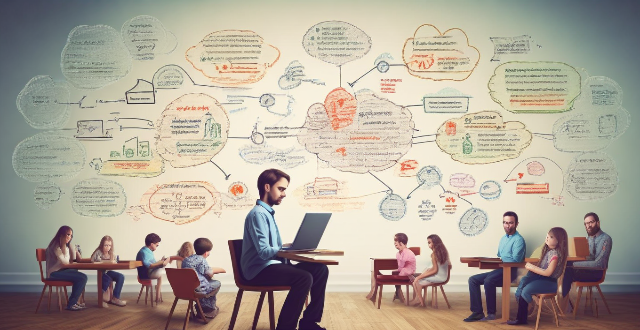
What are some benefits of using online learning resources compared to traditional classroom learning ?
Online learning resources offer advantages over traditional classroom learning, including flexibility and convenience, cost savings, personalized learning experiences, exposure to diverse cultures, and development of technology skills.

How can teacher training address cultural diversity in the classroom ?
In today's globalized world, cultural diversity is an increasingly important aspect of modern classrooms. Teacher training can play a crucial role in addressing this diversity by incorporating it into curriculum design, adapting teaching methods, providing professional development opportunities, and implementing fair assessment practices. By doing so, teachers can create inclusive classrooms where all students feel valued and supported, promoting equity and enhancing learning outcomes.

How can educational psychology help in classroom management ?
Educational psychology helps in classroom management by providing insights into student behavior, motivation, learning styles, and emotional needs. By understanding these factors, teachers can create effective strategies for managing challenging behaviors, promoting student motivation, tailoring teaching styles to different learning styles, enhancing student-teacher relationships, and addressing emotional needs. This leads to a positive and effective learning environment for all students.
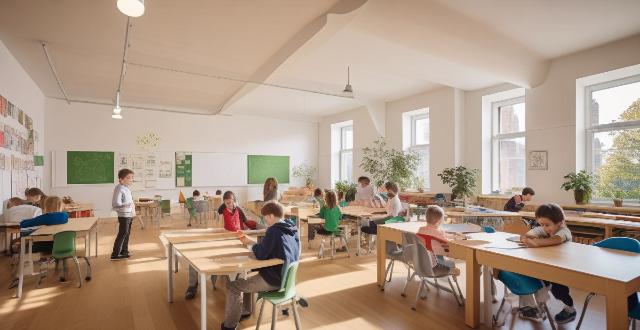
What are the benefits of using flipped classroom models as an innovative teaching strategy ?
The flipped classroom model is an innovative teaching strategy that reverses the traditional learning environment by delivering instructional content outside the classroom and using class time for interactive learning activities. This approach offers several benefits, including enhanced student engagement, improved student performance, optimized classroom time, increased teacher efficiency, promotion of lifelong learning skills, cultivation of a collaborative environment, support for differentiated instruction, encouragement of parental involvement, and flexibility for teacher innovation. Overall, the flipped classroom model empowers both students and teachers to make the most out of their educational experience by leveraging technology, fostering engagement, and promoting a culture of collaboration and lifelong learning.
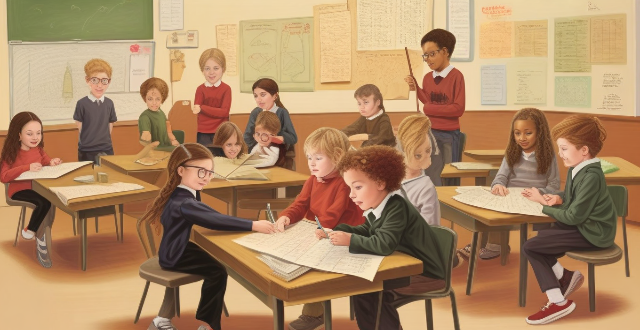
What are some innovative approaches to incorporating physical activity into daily classroom routines ?
Incorporating physical activity into daily classroom routines is essential for student development. Brain breaks, movement stations, active learning games, outdoor experiences, and mindful moments are effective ways to promote physical health, cognitive abilities, social skills, and emotional well-being. Examples include stretching exercises, dance parties, yoga poses, math hoops, word cones, chair yoga, scavenger hunts, Jeopardy! relay races, spelling jump rope, nature walks, field trips, outdoor classrooms, breathing exercises, body scan meditations, and gratitude journaling.
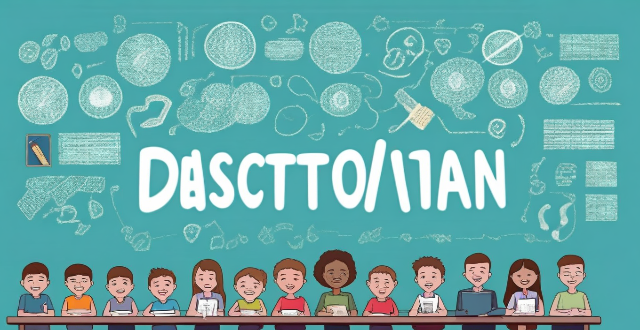
How can parents and teachers work together to address behavioral issues in the classroom ?
This text discusses the importance of collaboration between parents and teachers in addressing behavioral issues in the classroom. It emphasizes the impact of behavior on a student's academic performance, social interactions, and overall well-being, and suggests strategies for effective communication, positive reinforcement, clear expectations, differentiated interventions, and home-school collaboration. The roles and responsibilities of teachers, parents, and students are also outlined, along with challenges and solutions to overcome communication barriers, deal with resistant parties, and address complex behavioral issues. Case studies and examples are provided to illustrate successful interventions and common pitfalls, emphasizing the importance of continuous evaluation and improvement. The conclusion recaps key points and calls for active participation and ongoing support from both parents and teachers to effectively address behavioral issues in the classroom.

What strategies can teachers use to accommodate students with special education needs in the classroom ?
Strategies for Accommodating Students with Special Education Needs in the Classroom As an educator, it is essential to create an inclusive learning environment that meets the needs of all students, including those with special education needs. In this article, we will explore some effective strategies that teachers can use to accommodate students with special education needs in the classroom. 1\. Differentiated Instruction Differentiated instruction is a teaching approach that tailors instruction to meet individual student needs. This strategy involves modifying curriculum, instruction, and assessment to address diverse learning styles, abilities, and interests. Here are some ways to implement differentiated instruction: * **Varying the complexity of tasks**: Assign tasks of varying difficulty levels based on students' abilities and progress. * **Providing multiple means of representation**: Use visual aids, manipulatives, or technology to help students understand complex concepts. * **Offering choices in assignments**: Allow students to choose from different assignments or projects that align with their interests and strengths. 2\. Collaborative Learning Collaborative learning encourages students to work together to achieve common goals. This approach can benefit students with special education needs by providing opportunities for social interaction and peer support. Some collaborative learning strategies include: * **Group work**: Assign students to groups based on their skills and interests, ensuring each member has a role to play. * **Partner reading**: Have students read aloud with a partner, taking turns summarizing what they have read. * **Peer tutoring**: Match students with stronger academic skills with those who need additional support, allowing them to learn from each other. 3\. Assistive Technology Assistive technology refers to tools and devices designed to help individuals with disabilities perform tasks more easily. Incorporating assistive technology into the classroom can greatly benefit students with special education needs. Some examples of assistive technology include: * **Speech recognition software**: Helps students with physical limitations or dyslexia to dictate their thoughts and ideas. * **Audiobooks**: Provides auditory input for students who struggle with reading comprehension. * **Graphic organizers**: Visual tools that help students organize information and ideas, particularly useful for students with learning disabilities or ADHD. 4\. Clear and Consistent Routines Establishing clear and consistent routines can help reduce anxiety and increase predictability for students with special education needs. Some ways to implement routines include: * **Schedule boards**: Display daily schedules visually to help students understand what to expect throughout the day. * **Transitional cues**: Use verbal or visual cues to signal when it's time to switch activities or move to a different location. * **Predictable lesson structures**: Follow a consistent format for lessons, such as starting with a warm-up activity, followed by direct instruction, independent practice, and wrap-up discussions. 5\. Positive Behavioral Interventions and Supports (PBIS) PBIS is a framework designed to create positive school cultures by promoting appropriate behavior and supporting students in need of behavioral interventions. Some PBIS strategies include: * **Reinforcement systems**: Reward positive behaviors with tangible incentives or praise. * **Social skills training**: Teach students how to interact appropriately with peers and adults through role-playing and modeling. * **Behavior contracts**: Work with individual students to develop agreements outlining expected behaviors and consequences. 6\. Parental Involvement and Communication Maintaining open communication with parents is crucial for supporting students with special education needs. Some ways to involve parents include: * **Regular conferences**: Schedule meetings with parents to discuss their child's progress and address any concerns. * **Homework hotlines**: Provide a phone number or email address where parents can reach out for assistance with homework assignments. * **Family engagement activities**: Plan events that allow families to participate in school activities, fostering partnerships between home and school.

What is the connection between educational psychology and cultural diversity in the classroom ?
The text discusses the importance of integrating educational psychology and cultural diversity in classroom settings to enhance learning experiences, social skills, and academic achievement. It highlights the benefits of cultural diversity in education, including enhanced learning experiences, improved social skills, and increased academic success. The role of educational psychology is also emphasized, as it provides insights into how cultural diversity affects student learning and development. Key concepts related to cultural diversity in educational psychology include cognitive development, motivation, social interaction, and assessment. Strategies for integrating cultural diversity into educational psychology practices are also discussed, such as culturally responsive teaching, inclusive curriculum design, collaborative learning, and professional development opportunities. Overall, the text underscores the significance of addressing cultural diversity in the classroom through educational psychology principles and practices.
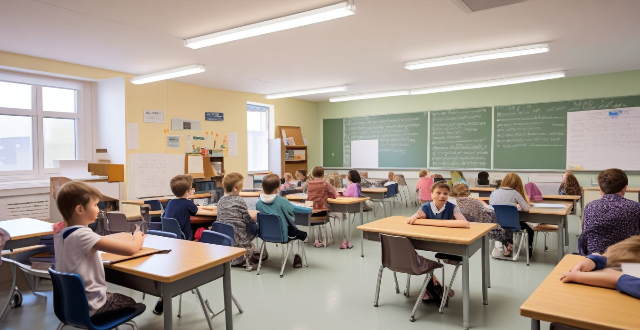
Can social distancing be implemented in schools and universities effectively ?
Social distancing is crucial to prevent the spread of infectious diseases, but implementing it in educational institutions like schools and universities can be challenging. Challenges include limited classroom space, managing student interaction outside of the classroom, and ensuring staff training and compliance. Effective strategies for implementing social distancing in these environments include classroom redesign, virtual learning options, signage and reminders, and monitoring and enforcement. By prioritizing health and safety, educational institutions can contribute to controlling the spread of infectious diseases while continuing to provide quality education.

How can technology be used to enhance learning for students with special education needs ?
Technology can significantly enhance learning for students with special education needs by offering personalized experiences, accessibility features, collaboration tools, data-driven insights, and safety/mental health support.

What is educational psychology ?
Educational psychology is a subfield of psychology that focuses on the learning process and its influencing factors. It aims to understand students' learning, thinking, and development over time, as well as how teachers can support their educational needs. Key concepts include learning theories, cognitive development, motivation, classroom management, and assessment and evaluation. Applications of educational psychology include curriculum design, special education, counseling and mental health services, teacher professional development, and research. By applying its principles, educators can create effective teaching strategies, foster positive classroom environments, and improve student outcomes.

How much sunlight do indoor plants need ?
Indoor plants require sunlight for photosynthesis, but the amount needed varies by species. General guidelines include low light tolerance for plants like Peace Lily and Snake Plant, medium light requirements for Dracaena and Pothos, and high light preference for Cacti and Succulents. Key considerations involve window orientation and artificial lighting. Success tips include researching plant needs, monitoring response, and gradual adjustment to new lighting conditions.

How much life insurance do I need ?
Determining how much life insurance you need is a complex process that depends on your financial situation, income replacement needs, debts and final expenses, current coverage, and consultation with a professional. Assessing your financial needs, calculating income replacement needs, considering debts and final expenses, evaluating current coverage, and consulting with a professional are all important steps to ensure you have the right amount of life insurance coverage for your loved ones.

What are some successful methods for teaching reading to children with special education needs ?
Successful methods for teaching reading to children with special education needs include multisensory instruction, individualized instruction, structured literacy approaches, differentiated instruction, technology-enhanced learning, collaboration with parents and caregivers, and inclusive classroom practices. These strategies aim to provide tailored, engaging, and supportive environments that cater to the unique needs of each child, promoting their reading development and overall educational success.

Can data analytics be used to personalize learning experiences for individual students ?
Data analytics is a powerful tool that can be used to personalize learning experiences for individual students by collecting data related to student performance, preferences and behaviors. This allows educators to tailor instruction to meet the unique needs of each learner. Data analytics can improve student outcomes, provide tailored instructional approaches, and use resources more efficiently. It can also identify student needs, design personalized learning plans and enhance teaching practices. By leveraging the power of data analytics, educators can better understand their students' needs, design effective learning plans, and enhance their teaching practices to promote improved outcomes for all learners.

What are some common challenges faced by educators when implementing data analytics in their classrooms ?
Educators face several challenges when implementing data analytics in their classrooms, including a lack of training and support, limited access to technology and data, time constraints, resistance to change, and privacy and ethics concerns. These challenges can make it difficult for teachers to effectively integrate data analytics into their teaching practices, potentially limiting the benefits that data-driven strategies can offer for improving student outcomes.
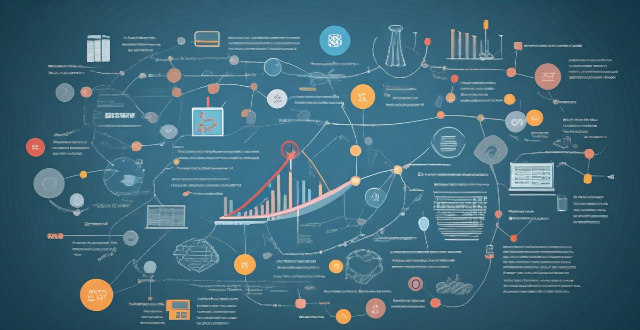
How can data analytics help identify areas where students may need additional support ?
Data analytics is a crucial tool in education as it helps identify areas where students may need additional support. It involves collecting and analyzing large sets of data to inform decision-making processes. Data analytics can be used to analyze student performance, track progress over time, and analyze behavior. Once areas for additional support are identified, personalized learning plans can be developed, collaboration between stakeholders can be facilitated, and continuous monitoring and adjustment can take place. Overall, data analytics provides valuable insights into student needs and promotes academic growth and success.

Can language learning apps replace the need for a tutor or teacher ?
In recent years, language learning apps have become popular for their convenience and affordability. While they offer personalized lessons and gamified experiences, these apps cannot fully replace the role of tutors or teachers due to limitations in personal interaction, cultural context, and speaking practice. Tutors can provide customized feedback, real-life conversations, and motivation that apps lack. Therefore, a combination of both methods is recommended for a comprehensive language learning experience.

How do virtual classrooms compare to traditional classrooms in terms of learning effectiveness ?
The text presents a comparative analysis of virtual classrooms and traditional classrooms in terms of learning effectiveness. The comparison is structured around several aspects: 1. **Learning Environment**: Traditional classrooms offer physical interaction but limited resources, while virtual classrooms provide flexibility and access to diverse resources. 2. **Teaching Methods**: Direct instruction and group work are emphasized in traditional settings, whereas interactive tools and personalized learning are characteristic of virtual environments. 3. **Student Participation**: Active participation and social dynamics are key in traditional classrooms, while virtual settings allow for asynchronous participation and cater to introverted students. 4. **Assessment and Feedback**: Immediate feedback and formative assessment are strengths of traditional classrooms, while automated feedback and summative assessment are advantages of virtual classrooms. 5. **Conclusion**: The choice between traditional and virtual classrooms depends on various factors, and an ideal approach could be a blended method that combines the best elements of both.

What types of assistive technology are available for students with special education needs ?
Assistive technology for students with special education needs includes devices and systems to enhance their functional capabilities. Types of AT include alternative communication tools, computer accessibility features, mobility aids, sensory aids, learning aids, environmental controls, orthotic/prosthetic devices, and personal emergency response systems. Selecting the right AT requires evaluation of student needs and collaboration between the student, family, teachers, and service providers to ensure it is user-friendly, effective, and integrated into the educational program.
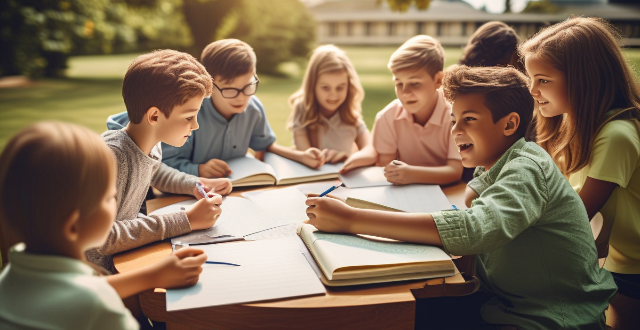
What is an Individualized Education Program (IEP) and how does it benefit students with special needs ?
The Individualized Education Program (IEP) is a legal document that outlines the educational needs of a student with special needs and provides a plan for how those needs will be met. It ensures that students with disabilities receive a free and appropriate public education tailored to their unique learning requirements. The benefits of an IEP include personalized learning plans, collaborative decision-making processes involving parents, measurable goals, accountability and documentation, and transition planning for older students. Overall, the IEP helps ensure that each student's unique learning profile is considered and addressed through a collaborative effort between educators and parents, resulting in a more effective educational experience that prepares students for success both academically and in their future endeavors.
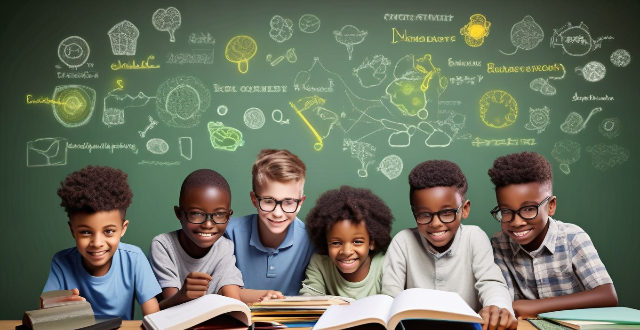
How does a multicultural society impact the education system ?
In a multicultural society, the education system is influenced in various ways. One of the most obvious impacts is diversity in classrooms which can enrich the learning environment and help students develop empathy and understanding for people who are different from themselves. The curriculum may need to be adapted or changed to accommodate the needs of a diverse student population. Language barriers can also be a challenge for both students and teachers. Educators need to be culturally sensitive and aware of the diverse backgrounds of their students. Parental involvement in education can be complex in a multicultural society. By embracing diversity in the classroom, the education system can create an inclusive and enriching learning environment for all students.
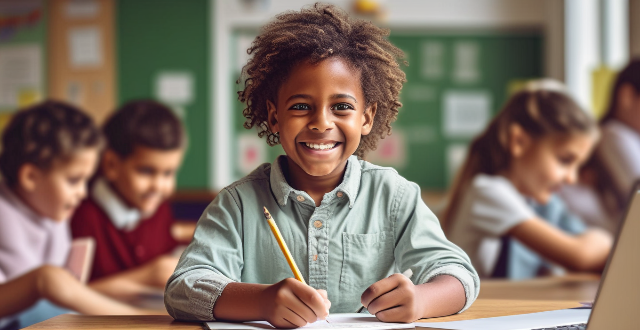
How can teacher training be tailored to support early career teachers versus more experienced educators ?
Teacher training is crucial for educators at all stages of their careers, but the needs of early career teachers differ from those of experienced educators. Early career teachers benefit from training focused on classroom management, curriculum development, instructional strategies, professional development, and mentorship programs. Experienced educators may seek training in advanced instructional methods, leadership development, technology integration, professional growth opportunities, and mentorship opportunities. Tailoring teacher training to meet the unique needs of both groups can be achieved through a variety of programs such as orientation workshops, coaching sessions, collaborative learning groups, online courses, advanced workshops, research collaborations, professional development retreats, and online learning communities. By providing tailored support, teacher training empowers educators to achieve excellence in teaching and positively impact student learning outcomes.
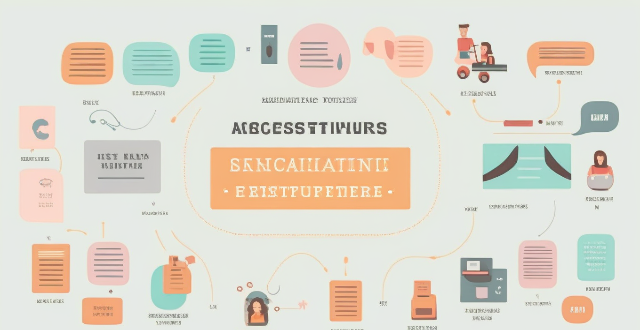
How do remote education platforms cater to students with special needs ?
Remote education platforms offer a range of accessibility features, personalization options, and support services to cater to the needs of students with special needs. These include text-to-speech and speech-to-text features, closed captions and transcripts, alternative formats for course materials, customizable settings, flexible scheduling, adaptive learning technologies, tutoring and mentoring services, accommodations and modifications, and counseling and mental health support. By providing these resources, remote education platforms can help ensure that all students have equal opportunities to succeed in their courses.

What are the legal rights of students with special education needs under the law ?
Students with special education needs have specific legal rights under the law, including the right to a free and appropriate public education, individualized education programs, least restrictive environment, non-discriminatory assessment practices, and procedural safeguards. These rights are designed to ensure that students with special education needs receive an equitable and appropriate education that allows them to reach their full potential.
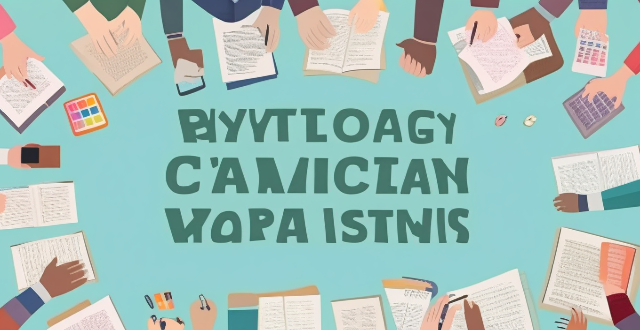
How can educational psychology improve teacher-student relationships ?
Educational psychology can enhance teacher-student relationships by promoting empathy, clear communication, effective classroom management, emotional intelligence, cultural competence, personalized instruction, and collaboration. Understanding diverse student needs, active listening, consistent messaging, feedback, clear boundaries, fair discipline, self-awareness, managing emotions, inclusivity, adaptability, tailored instruction, personalized attention, parental involvement, and peer support are all strategies that contribute to a positive learning environment.